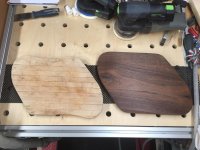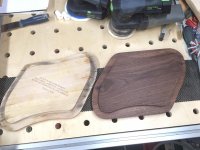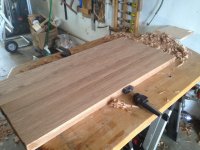alltracman78
Member
- Joined
- Dec 25, 2022
- Messages
- 220
I'm thinking about building a butcher block island top, possibly counter as well.
If I do I'll be using hickory or maple (Norway maple).
I like the fact that the maple grain is smoother, plus it's much easier to find if I don't have enough.
The maple has less character in the grain, so less of a loss if it's end grain?
I don't think it's as hard as the hickory though.
My question for now is; my understanding is "real" butcher block is end grain, not long grain.
Other than being cheaper, is there a particular reason all I see is long grain butcher block in kitchens?
I understand building it with end grain is considerably more work. Is it worth the extra effort?
I'd love to hear from those that have some experience with it.
If I do I'll be using hickory or maple (Norway maple).
I like the fact that the maple grain is smoother, plus it's much easier to find if I don't have enough.
The maple has less character in the grain, so less of a loss if it's end grain?
I don't think it's as hard as the hickory though.
My question for now is; my understanding is "real" butcher block is end grain, not long grain.
Other than being cheaper, is there a particular reason all I see is long grain butcher block in kitchens?
I understand building it with end grain is considerably more work. Is it worth the extra effort?
I'd love to hear from those that have some experience with it.




